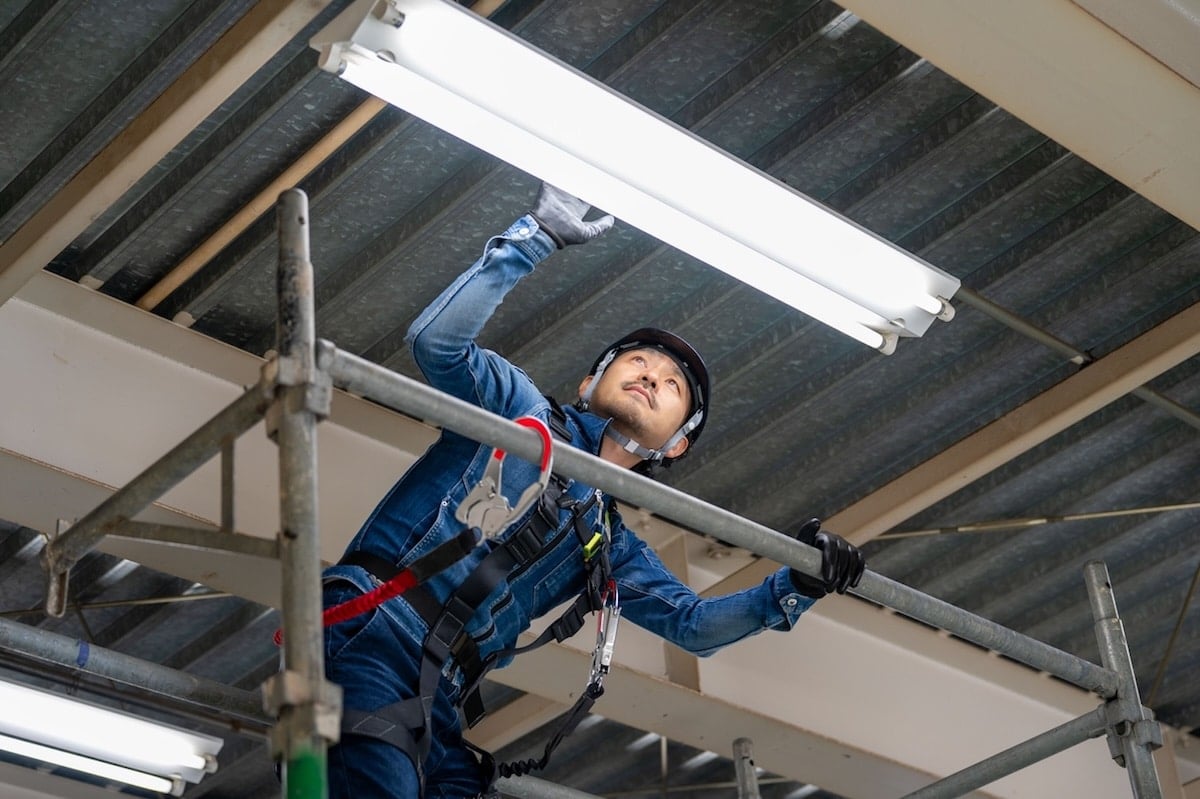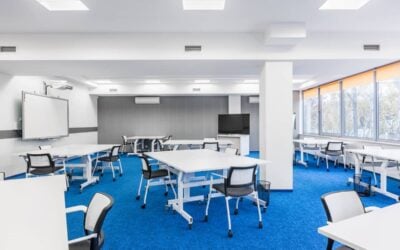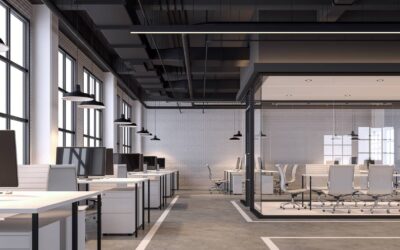Lighting Maintenance in Industrial Facilities
Managing a warehouse facility is more than just keeping shelves organized. The lighting that constantly surrounds the people and products play a big part in the well-being of the business. Lighting maintenance in industrial facilities helps ensure safety, reduce energy costs and enhance operational efficiency. Following these guidelines can lead to significant improvements in both performance and bottom-line savings.
Why Lighting Maintenance Matters
Proper industrial lighting maintenance directly impacts the safety and productivity of any industrial environment. These lighting systems provide the right amount of illumination, reduce the risk of accidents, and create a comfortable working atmosphere. Additionally, regular upkeep extends the lifespan of lighting fixtures, leading to cost savings and improved energy efficiency. Learn more about the different types of warehouse lighting from TCP.
Best Practices for Industrial Lighting Maintenance
To optimize industrial lighting performance and longevity, follow these best practices:
Regular Cleaning of Fixtures and Lamps
Accumulation of dust, dirt and debris on warehouse lighting fixtures can limit light output and cause overheating. Regular cleaning helps with optimum illumination and prevents potential fire hazards. Keeping fixtures clean also supports efficient industrial lighting by maintaining optimal lighting levels. Get additional lighting installation and safety tips here.
Scheduled Lamp Replacement
A group relamping strategy, where all lamps are replaced simultaneously, is a cost-effective approach that prevents random lamp failures. This is also good for ensuring consistent industrial lighting levels. This minimizes maintenance disruptions and keeps the warehouse lighting functioning efficiently.
Inspect Electrical Components
Prevent unexpected failures and maintain system reliability by regularly checking ballasts, drivers and electrical connections for signs of wear or malfunction. Addressing minor issues early can prevent costly repairs and extend the life of your industrial lighting solutions.
Test Control Systems
Periodically testing smart commercial lighting controls, such as timers, dimmers and motion sensors, ensures they function as intended, optimizing energy savings and user comfort. These controls can enhance operational efficiency and further reduce energy consumption. Smart lighting systems can also be programmed to turn off during quiet parts of the day when there is no warehouse activity. This feature contributes to cost and energy savings by preventing unnecessary energy use during downtime.
Upgrade to LED Lighting
Switching to energy-efficient LED industrial lighting can reduce energy consumption by up to 90% compared to traditional incandescent bulbs. LEDs also offer longer lifespans, resulting in lower maintenance and replacement costs. Learn more about the different types of lighting suitable for commercial use here.
Transitioning to LED warehouse lighting solutions not only enhances efficiency but also aligns with sustainable practices, contributing to a greener environment.
Developing a Maintenance Schedule
Establishing a structured industrial lighting maintenance schedule helps systematically address various tasks. Here’s a suggested timeline:
Weekly:
- Clean warehouse lighting fixtures and lamps.
- Inspect and test control systems.
Monthly:
- Check electrical components for signs of wear.
- Review and adjust industrial lighting levels as needed.
Quarterly:
- Perform group relamping for areas with high usage.
- Evaluate energy consumption and identify optimization opportunities.
Annually:
- Conduct a comprehensive audit of the commercial lighting system.
- Plan and budget for necessary upgrades or replacements.
Upgrade Your Warehouse Lighting with TCP
Partnering with a commercial lighting manufacturer like TCP Lighting can significantly enhance your facility’s industrial lighting solutions. TCP Lighting offers a wide range of energy-efficient LED products and comprehensive commercial lighting solutions tailored to industrial applications. TCP’s vertically-integrated business model assures you that once you place your order, the inventory is checked and immediately on the way. Additionally, because TCP also designs lighting to meet a variety of compliance requirements and commercial functionality, TCP’s product expertise is helpful for anyone to make sure the warehouse lighting system meets safety standards, reduces energy consumption and aligns with your operational goals.
By adopting these industrial lighting maintenance practices and considering an upgrade with TCP Lighting, industrial facilities can achieve efficient industrial lighting performance, leading to improved safety, reduced costs and enhanced efficiency.






